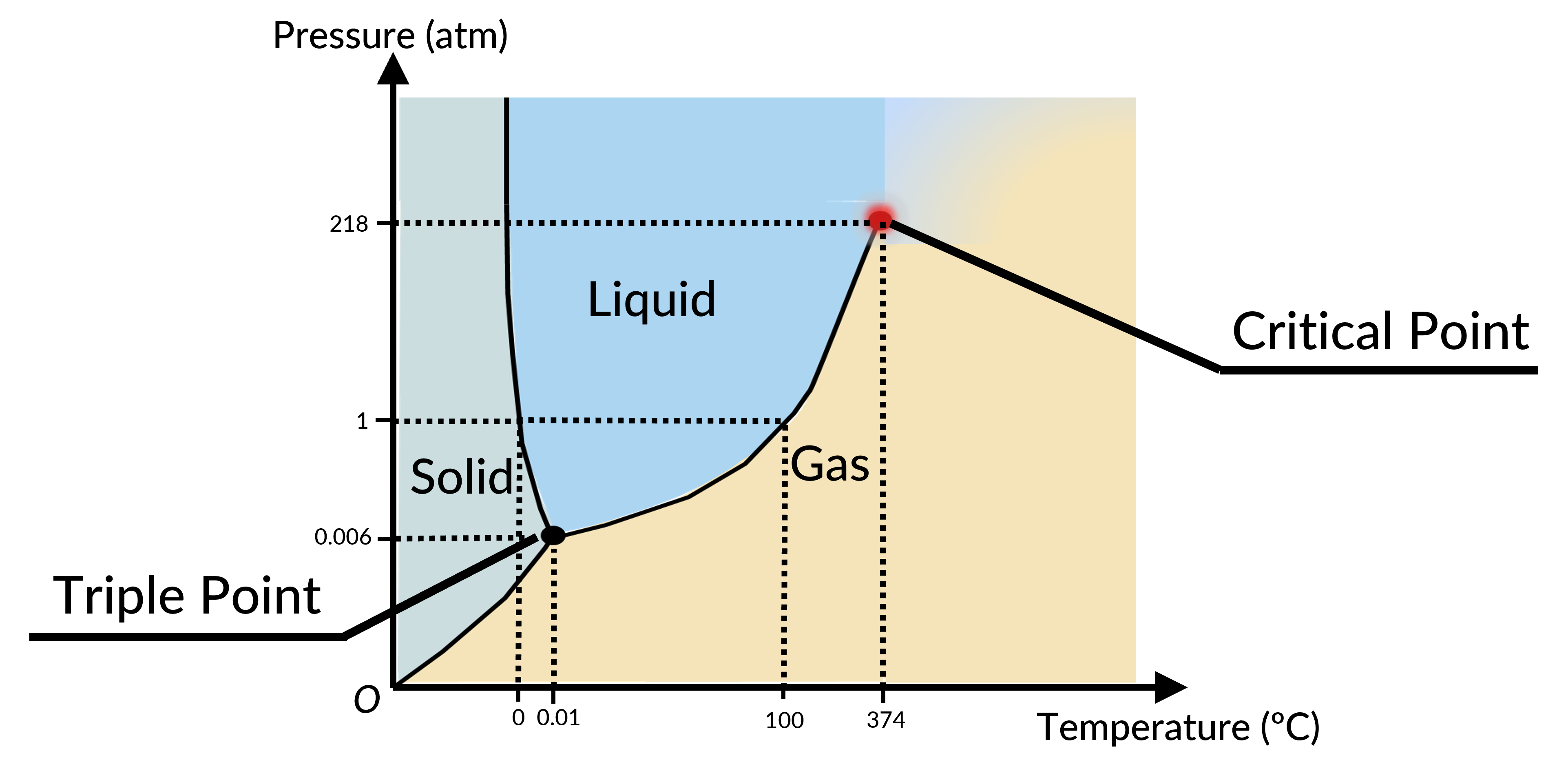19.9:
Phase Diagram
In nature, matter exists in three phases: solid, liquid, and gas. The transition between phases requires phase equilibrium between two phases and occurs at a specific temperature for a given pressure.
These conditions can be represented graphically with pressure and temperature as the axes, known as a phase diagram.
A phase diagram represents the phases of a substance that coexist in thermodynamic equilibrium and undergo phase transition under different conditions, such as temperature, pressure, or volume.
Water exists in the liquid phase at room temperature and atmospheric pressure. At temperature 0oC or below, the phase changes from liquid to solid, whereas when the temperature is above 100oC, it changes to a gas phase.
The transition between solid and gas is called sublimation, while the transitions from solid to liquid and from liquid to gas are known as fusion and vaporization, respectively.
The point when all three phases coexist is known as the triple point, and the point when the properties of two phases become indistinguishable is known as a critical point.
19.9:
Phase Diagram
The phase of a given substance depends on the pressure and temperature. Thus, plots of pressure versus temperature showing the phase in each region provide considerable insights into the thermal properties of substances. Such plots are known as phase diagrams. For instance, in the phase diagram for water (Figure 1), the solid curve boundaries between the phases indicate phase transitions (i.e., temperatures and pressures at which the phases coexist).

As the pressure increases, the boiling temperature of water rises gradually to 374 °C at a pressure of 218 atm. This can be demonstrated in a pressure cooker, which cooks food faster than an open pot, because the water can exist as a liquid at temperatures greater than 100 °C without all boiling away. The boiling point curve ends at a certain point called the critical point, the temperature above which the liquid and gas phases cannot be distinguished; the substance is called a supercritical fluid. At a sufficiently high pressure above the critical point, a gas has the density of a liquid but does not condense. The pressure at this critical point is known as the critical pressure. Carbon dioxide, for example, is supercritical at all temperatures above 31.0 °C, the point at which all three phases exist in equilibrium. For water, the triple point occurs at 273.16 K (0.01 °C) and 611.2 Pa; this is a more accurate calibration temperature than the melting point of water at 1.00 atm, or 273.15 K (0.0 °C).
Suggested Reading
- OpenStax. (2019). University Physics Vol. 2. [Web version], Pg 37 – 38. Retrieved fromhttps://openstax.org/books/university-physics-volume-2/pages/1-5-phase-changes
